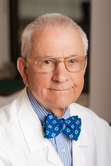| Abstract: |
Because its expression appears to be largely restricted to human melanomas, 9–0-acetyl-GD3 is a candidate antigen for vaccine construction. Searching for potential sources, we compared chemically 0-acety-lated calf brain GD3 and 9–0-acetyl-GD3 extracted from bovine buttermilk with 9–0-acetyl-GD3 from human melanoma. Three fractions (Fl-F3) of chemically 0-acetylated GD3 differed in the number and position of 0-acetyl groups. 0-Acetylation sites were the lactose portion in Fl and lactose as well as sialic acid in F2 and F3. Natural (melanoma- or buttermilk-derived) 9–0-acetyl-GD3 was O-acetylated solely on the sialic acid moiety. While Fl was not reactive with monoclonal antibodies against 9–0-acetyl-GD3, F2 and F3 were as reactive as the natural products. Immunization with the natural products induced high-titer antibodies against natural 9–0-acetyl-GD3 as well as F2 and F3. In contrast, mice immunized with the synthetic fractions produced antibodies only against the immunogen but not against natural 9–0-acetyl-GD3. Only immunization with the natural products induced production of antibodies reactive with surface antigens of melanoma cells expressing 9–0-acetyl-GD3. The findings suggest (a) that C-9 of the subterminal sialic acid is the site of chemical 0-acetylation in F2 and F3, as opposed to C-9 of the terminal sialic acid in the natural products; (b) that 0-acetylation of both the terminal and subterminal sialic acid moieties of GD3 results in recognition by three murine monoclonal antibodies (D1.1, ME 311, and Jones) reactive with human melanoma cells; (c) that 0-acetylation of the terminal sialic acid is critical, on the other hand, for inducing an immune response against melanoma 9–0-acetyl-GD3; and (</) that 0-acetyl GD3 from bovine buttermilk can substitute as immunogen for inducing an immune response against human melanoma cell surface antigens in the mouse. © 1990, American Association for Cancer Research. All rights reserved. |
| Keywords: |
human cell; nonhuman; animal cell; animal; mice; melanoma; mice, inbred balb c; mice, inbred c57bl; immunoglobulin g; immunogenicity; cattle; chromatography, high pressure liquid; acetylation; immunization; gangliosides; ganglioside; milk; chromatography, thin layer; human; female; priority journal; article; support, non-u.s. gov't; support, u.s. gov't, p.h.s.; butter
|






